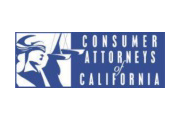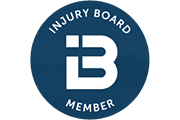The growing popularity of ride share services has revolutionized the way people get around cities. With just a few taps on a smartphone, passengers can summon a ride from a nearby driver who arrives at their location within minutes. However, as ride share services have grown in popularity, so have significant concerns about San Francisco pedestrian accidents involving ride share drivers. And, as a San Francisco pedestrian accident attorney, I have some strong opinions about the connection between the rise in ride share use and the rise in pedestrian personal injuries.
In an already crowded city, the influx of Uber and Lyft drivers coming to San Francisco each day has increased traffic congestion and confusion, and also has contributed to an increase in pedestrian accidents, pedestrian injuries, and pedestrian fatalities. Uber and Lyft drivers have run over pedestrians while roaming the streets of San Francisco seeking to connect with passengers, and while picking up and dropping off passengers throughout the City.
Sometimes, by failing to yield to pedestrians at crosswalks, and often by failing to adequately focus on the roadway, and most often by driving in a distracted manner while using their ride share apps, Uber and Lyft drivers cause serious pedestrian injuries and wrongful deaths. These San Francisco pedestrian injuries and wrongful deaths highlight the growing need to address the challenges associated with San Francisco ride share drivers and pedestrian safety. Our law office seeks to increase pedestrian safety by making those drivers who strike and injure or kill pedestrians fully accountable. Only when careless Uber and Lyft drivers are made fully accountable can we hope to change these drivers’ bad behavior.
The nature of the ride share driving job itself presents several safety challenges to Uber and Lyft operators. Often living in outlying areas, many miles from San Francisco, ride-share drivers may be driving to work in San Francisco for the very first time. Ride share drivers use their own vehicles and pay for their own fuel and vehicle maintenance to provide transportation services through Uber and Lyft. Ride share drivers work long hours, often during peak traffic times, and are constantly navigating through unfamiliar streets and neighborhoods to pick up and to drop off passengers. Ride share drivers have to keep a vigilant watch on their ride share app to assure that they can obtain the most passengers on any given day, just to make a decent living. The amount paid to Uber and Lyft drivers per ride is low enough, and the costs of operating the vehicles and driving in from a suburb or another city can lead to increased stress and fatigue, which may impair their driving abilities and decision-making skills, posing a particular risk to pedestrians.
Another challenge is the ride-share driver’s reliance on technology. Ride share drivers heavily rely on their smartphones and the ride share app to navigate, accept rides, and to communicate with passengers. However, this reliance on technology can be a distraction, taking their attention away from the road and pedestrians. Furthermore, ride share drivers may feel pressure to accept as many rides as possible to maximize their earnings, leading to a rush to pick up or drop off passengers, which can cause a decrease in caution and an increase in the risk of pedestrian accidents.
Additionally, pedestrian behavior and awareness play a role in the issue. Pedestrians, too, have a responsibility to be vigilant and follow traffic rules when crossing streets, using crosswalks, or walking alongside roads. However, distractions such as smartphones or headphones, jaywalking, and failure to use designated pedestrian crossings can contribute to accidents involving ride share drivers. And sometimes Uber and Lyft drivers act in ways that violate the pedestrian’s expectations, greatly exacerbating the risk of pedestrian injuries.
To address the challenges associated with ride share drivers and pedestrian accidents, various stakeholders need to take action. Ride share companies should prioritize safety by implementing measures to minimize distractions for drivers while using their apps and encouraging drivers to take breaks to avoid fatigue. They should also provide comprehensive training to drivers on defensive driving, pedestrian safety, and the importance of following traffic rules.
Regulatory bodies can play a crucial role in implementing and enforcing safety regulations for ride share companies and drivers. These regulations could include mandatory rest breaks for drivers, limitations on the number of consecutive driving hours, and strict penalties for distracted driving. Additionally, local authorities can work to improve infrastructure by implementing more visible crosswalks, pedestrian signals, and traffic calming measures to enhance pedestrian safety.
Pedestrian awareness and education are also vital in addressing the issue. Pedestrians should be educated about traffic rules, the importance of using designated crosswalks, and avoiding distractions while walking. Public awareness campaigns and educational programs can help increase pedestrian awareness and promote safe pedestrian behavior. An informed San Francisco pedestrian accident attorney can help with your personal injury claim.
In conclusion, the rise of ride share drivers has transformed urban transportation, however it has also increased the risk of pedestrian accidents involving ride share drivers. The challenges associated with the nature of the ride share job, reliance on technology, and pedestrian behavior need to be addressed through collaborative efforts among ride share companies, regulatory bodies, local authorities, and pedestrians themselves. By prioritizing safety, implementing regulations, and promoting pedestrian awareness, we can work towards creating safer roads and hopefully reduce pedestrian injuries and fatal pedestrian collisions.





